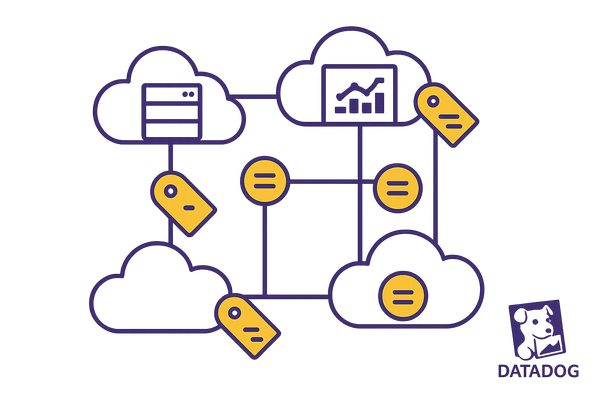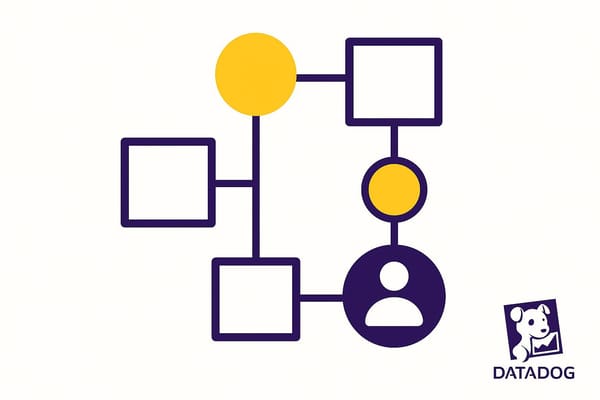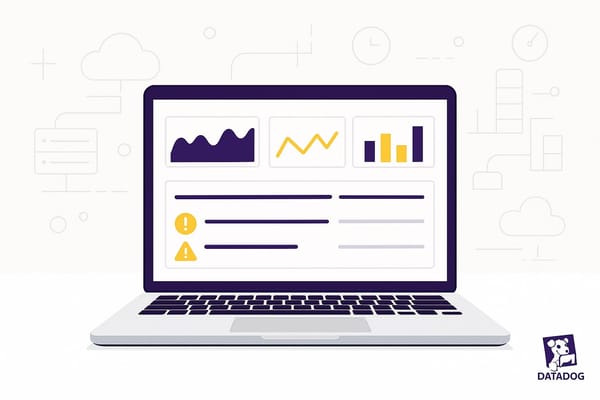Datadog Compliance Reporting: Setup Guide
Streamline your compliance reporting process with automated monitoring and data integration, ensuring regulatory requirements are efficiently met.
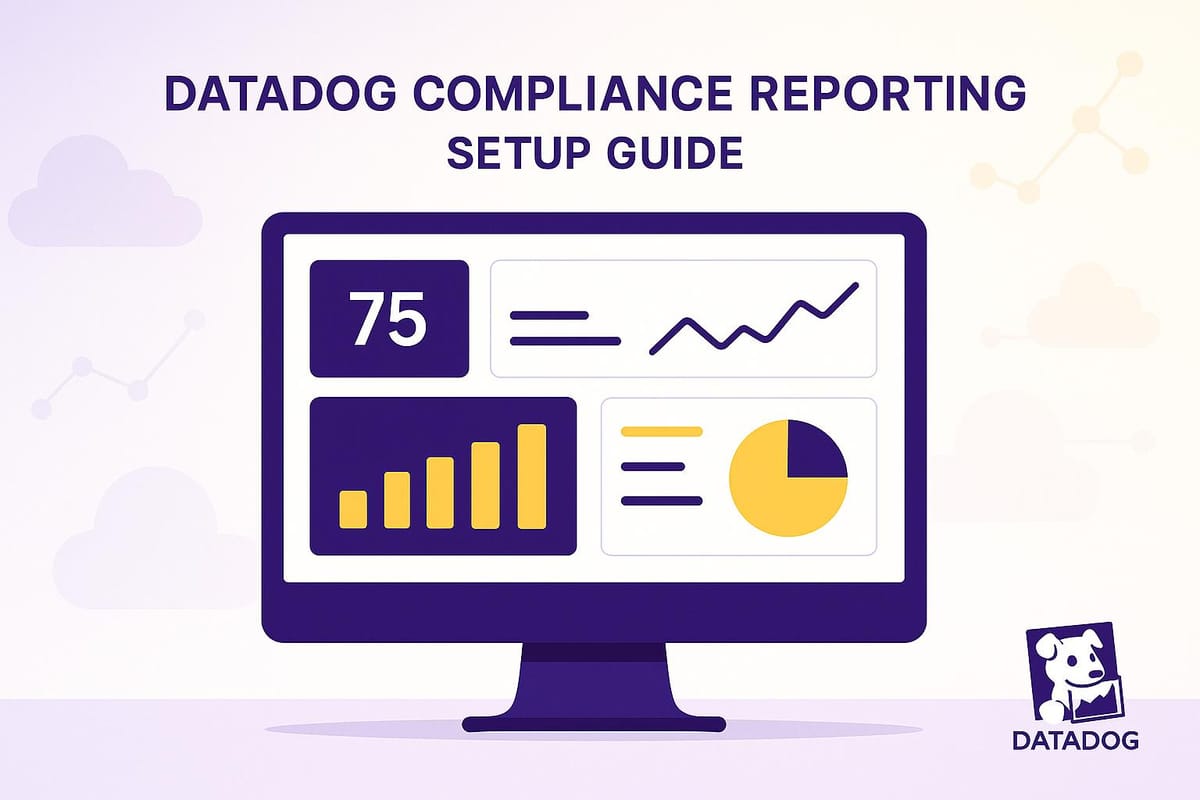
Datadog Compliance Reporting streamlines compliance for SMBs by automating data collection, monitoring, and reporting. This guide helps you set up key features, integrate data sources, and manage compliance reports effectively.
Key Steps to Get Started:
- Enable Compliance Features: Activate monitoring, assessments, and templates.
- Set Up Access Controls: Use role-based permissions for secure data management.
- Connect Data Sources: Integrate system logs, security events, and cloud services.
- Configure Monitors: Track security events, network compliance, and regulatory alerts.
- Automate Reports: Use templates and schedules for consistent reporting.
With Datadog, you can reduce manual effort, focus on critical compliance needs, and ensure regulatory requirements are met efficiently.
Let’s dive into the details to help you get started!
Datadog Telemetry Compliance Demo
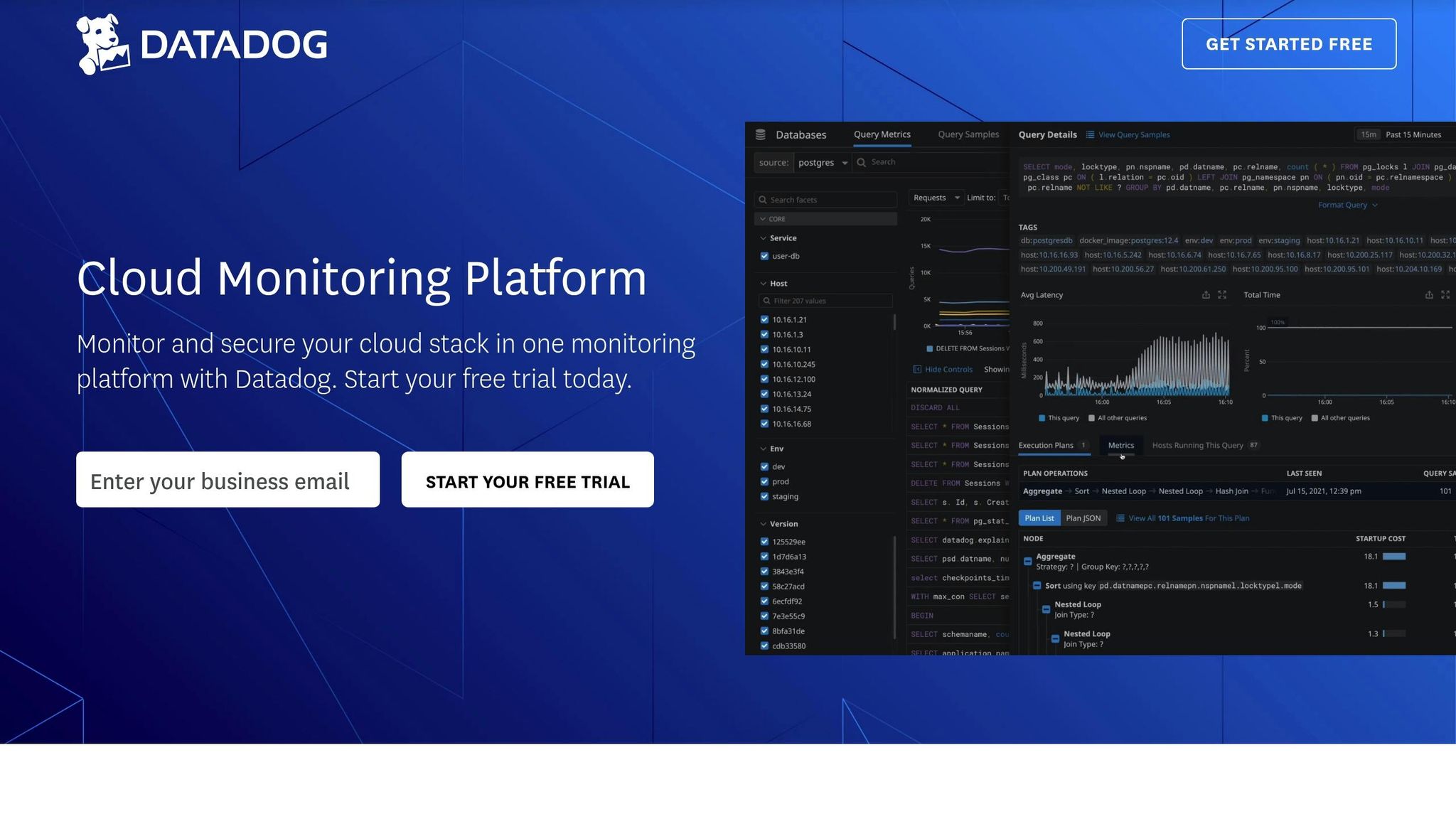
Basic Setup Steps
Set up key compliance features to help small teams monitor effectively.
Enable Compliance Features for SMBs
Head to your Datadog settings and turn on these compliance options:
- Monitoring features: Activate to track compliance metrics.
- Automated assessments: Enable for streamlined evaluations.
- Report templates: Use pre-built templates for quick reporting.
Also, make sure to configure Multi-Factor Authentication (MFA) to keep access secure.
Configure Access Controls
Use role-based access control (RBAC) to assign permissions properly for compliance data. Here's a quick overview:
| Role | Access Level | Typical Assignment |
|---|---|---|
| Compliance Admin | Full access | Security leads, IT managers |
| Report Viewer | Read-only for reports | Auditors, department heads |
| Data Collector | Write access for logs | System administrators |
Stick to the principle of least privilege to avoid unnecessary access.
Set Up Audit Logs
Enable logging to track key activities, including:
- User access attempts
- Configuration changes
- Report generation
- Data source modifications
Set a minimum retention period of 12 months to meet annual audit requirements. For added security, enable log forwarding to back up critical data.
Once you've completed these steps, you're ready to integrate your data sources for a more detailed monitoring setup.
Connect Data Sources
To monitor effectively, you'll need to connect your data sources. Here's how to get started:
Key Integrations
Set up these integrations to gather compliance-related data:
| Integration Type | Purpose | Key Data Points |
|---|---|---|
| System Logs | Track system changes | Access logs, configuration updates |
| Security Events | Monitor threats | Authentication attempts, policy violations |
| Network Traffic | Observe data flow | Ingress/egress data, protocol usage |
| Cloud Services | Watch cloud resources | API calls, resource access |
You can enable these integrations directly in your Datadog dashboard by navigating to Integrations > Security & Compliance. After that, you'll need to set up your cloud logs for smooth data collection.
Setting Up Cloud Logs
To ensure a complete audit trail, connect your cloud provider logs by following these steps:
- Configure your cloud logging service to capture all API activity.
- Set retention policies to keep logs for at least 12 months.
- Forward logs to Datadog with the following parameters:
| Parameter | Setting |
|---|---|
| Buffer Size | 256 KB |
| Batch Interval | 15 seconds |
| Compression | Enabled |
| Encryption | TLS 1.3 |
These configurations will help you maintain a reliable and secure logging system.
Set Up Compliance Monitors
Once your data sources are connected, it's time to set up monitors for tracking security events, network compliance, and regulatory alerts.
Security Event Monitoring
Set up monitors to keep an eye on critical security events:
| Monitor Type | Threshold | Alert Priority |
|---|---|---|
| Failed Login Attempts | More than 5 within 5 minutes | High |
| Privilege Escalations | Any occurrence | Critical |
| Configuration Changes | Unauthorized changes | High |
| Data Access Patterns | Unusual activity | Medium |
To configure these, go to Monitors > New Monitor > Security in your Datadog dashboard.
- Define specific trigger thresholds for each event.
- Set up notification channels for prompt alerts.
- Include clear and concise details in each alert to streamline response efforts.
Once your security monitors are ready, move on to network compliance checks.
Network Compliance Checks
Network compliance monitors help ensure your infrastructure stays within acceptable boundaries. Focus on these two key areas:
-
Traffic Pattern Analysis
Use network flow monitors to detect irregular patterns that could signal compliance issues. Watch for:- Attempts to access unauthorized ports
- Unusual data transfer volumes
- Use of non-compliant protocols
- Violations of geographic access restrictions
-
Encryption Verification
Ensure data transmissions adhere to encryption standards by monitoring:- Consistency of TLS protocol versions
- Certificate expiration dates
- Use of approved encryption algorithms
- Key rotation events
With network compliance in place, the next step is setting up regulatory alerts.
Regulatory Alert Setup
Regulatory alerts are essential for staying compliant with specific frameworks. Tailor your alerts to match your organization's regulatory landscape:
| Regulation Type | Monitor Focus | Update Frequency |
|---|---|---|
| Data Privacy | PII Access Logs | Real-time |
| Financial | Transaction Patterns | Every 15 minutes |
| Healthcare | PHI Access Events | Real-time |
| Industry-Specific | Custom Requirements | As needed |
To ensure effective regulatory monitoring:
- Link each regulatory requirement to relevant data points.
- Establish threshold-based alerts for tracking compliance metrics.
Compliance Report Management
Once you've set up monitors and data sources, you can integrate compliance insights into structured reports for better visibility and tracking.
Build Report Templates
Leverage Datadog Notebooks to design consistent compliance report templates. Use the template gallery to customize sections like Security Events, Control Status, Remediation, and Audit Trail. Here's a breakdown:
| Template Section | Key Elements | Update Frequency |
|---|---|---|
| Security Events | Authentication logs, Access patterns | Real-time |
| Control Status | Passing/failing checks, Compliance scores | Daily |
| Remediation | Action items, Resolution tracking | As events occur |
| Audit Trail | Configuration changes, User activity | Hourly |
Set Report Schedule
Simplify compliance reporting with the PDF Reporter integration by automating delivery schedules. Reports can be timed for off-peak hours, such as 2 AM local time. Here's how you can structure your schedule:
| Report Type | Schedule | Distribution Group |
|---|---|---|
| Daily Security | Every 24 hours | Security Team |
| Weekly Compliance | Fridays 5 PM ET | Compliance Officers |
| Monthly Audit | 1st of the month | External Auditors |
| Quarterly Review | End of quarter | Executive Team |
Incorporate threshold queries to reflect up-to-date compliance metrics. Once the schedules are set, you can shift focus to secure report distribution.
Manage Report Distribution
Control who receives reports by setting up recipient groups with role-based access control (RBAC) policies. Use the Sensitive Data Scanner to protect sensitive information. Best practices for report distribution include:
- Defining recipient groups based on security clearance levels
- Enabling automatic redaction for sensitive data fields
- Setting retention periods that align with regulations
- Configuring cloud storage for long-term archival
For reports containing PII, enable automatic archiving by tagging them with expiration dates using the Sensitive Data Scanner. These steps ensure compliance while maintaining data security.
SMB Efficiency Tips
Streamlining workflows is key for SMBs, especially when it comes to improving compliance reporting in Datadog. Here are some practical ways to make the process smoother.
Small Team Management
For smaller teams, set up role-based dashboards that highlight the most important compliance metrics for Security Leads, IT Administrators, and Compliance Officers. Use Smart Monitors to group related events, cutting down on unnecessary alerts. These targeted approaches naturally help keep monitoring efficient and cost-conscious.
Budget-Friendly Monitoring
Focus on the compliance controls that matter most. Configure essential monitors, adjust log collection based on risk levels, and implement tiered retention policies that match the importance of your data. This ensures you're spending resources where they count.
Simplify Daily Tasks
Automate repetitive compliance tasks with Compliance Playbooks and unified report summaries. Smart alert management, which adjusts thresholds using historical data, can also help reduce the daily workload and keep things running smoothly.
Conclusion
Compliance reporting in Datadog works best when it combines proper setup, smart data integration, and automated monitoring. This approach ensures you can monitor compliance effectively without overloading your team or resources.
Key elements like targeted alerts, role-based access, and automated reports help streamline workflows. These features not only keep operations efficient but also ensure compliance needs are met. Regularly reviewing and refining your processes can further enhance your monitoring efforts.
For SMBs, starting small is often the most practical approach. Focus on the core compliance needs first, then expand gradually. This method helps create monitoring practices that are both manageable and scalable, laying the groundwork for business growth while keeping operations running smoothly.
FAQs
How can I keep my compliance reports in Datadog secure and accessible only to the right people?
To ensure your compliance reports in Datadog remain secure, start by managing user permissions effectively. Use role-based access control (RBAC) to assign specific roles and permissions to team members, ensuring only authorized personnel can view or edit sensitive reports. Regularly review and update these permissions to align with your team's needs.
Additionally, enable multi-factor authentication (MFA) for all accounts to add an extra layer of security. This helps protect your data even if login credentials are compromised. Finally, monitor access logs within Datadog to track who is accessing your compliance reports and identify any unusual activity promptly.
How can I set up cloud log integrations in Datadog to maintain a complete audit trail?
To set up cloud log integrations in Datadog and ensure a comprehensive audit trail, start by connecting your cloud provider's logging service (e.g., AWS CloudTrail, Azure Monitor, or Google Cloud Logging) to Datadog. This allows Datadog to collect and centralize logs for monitoring and auditing purposes. Configure log filters and tagging to organize data effectively and ensure important events are easily traceable.
For best practices, enable log retention policies that comply with your organization's compliance requirements and regularly review your log settings to ensure they capture all critical events. Additionally, use Datadog's dashboards and alerts to monitor for unusual activity and maintain visibility into your system's security and operations.
How can small businesses manage compliance monitoring in Datadog without straining their resources?
Small businesses can effectively manage compliance monitoring in Datadog by leveraging its built-in compliance reporting tools. These tools are designed to simplify the process, ensuring your team can focus on critical tasks without being overwhelmed. Start by configuring Datadog's compliance integrations to monitor your cloud environment and identify potential risks automatically.
To keep costs under control, prioritize the most relevant compliance frameworks for your business and enable only the necessary monitoring features. Datadog's intuitive dashboards and automated alerts help streamline workflows, reducing manual effort and saving time. With proper setup, you can maintain compliance while staying within your budget and resource limits.


